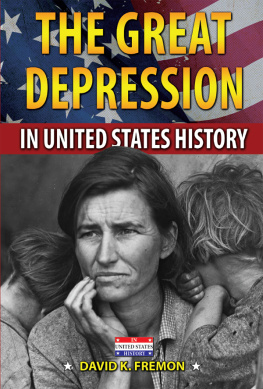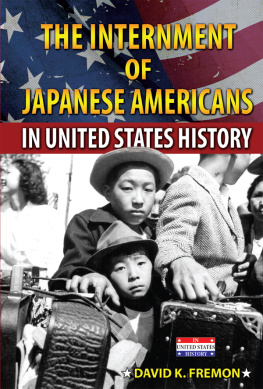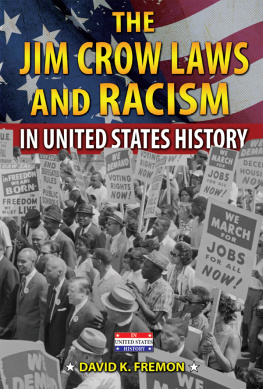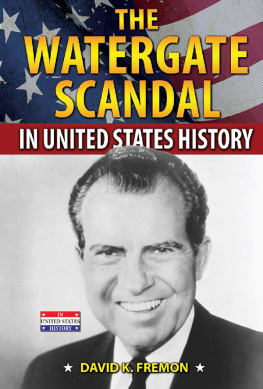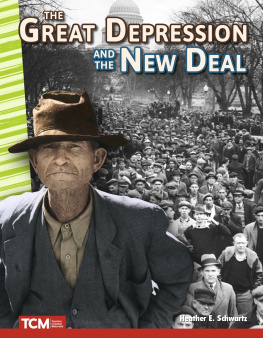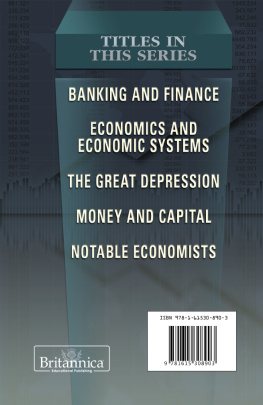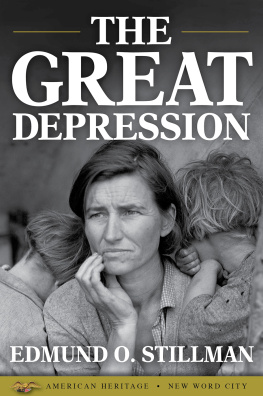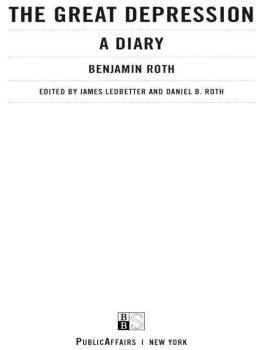Financial Disaster
The Great Depression began when the never-ending party of the Roaring Twenties came to a sudden halt. On October 29, 1929, which became known as "Black Tuesday," the stock market crashed, starting a downward economic slide. Banks failed, countless businesses were wiped out, and hard-working people found themselves without jobs, homes, and even food. At the height of the Great Depression, a quarter of the American population was out of work.
In The Great Depression in United States History, author David K. Fremon brings to life the trials and triumphs of the 1930s. Highlighted are examples of the many ways that Americans kept a positive outlook while facing an uncertain future. New programs such as the New Deal got Americans working again and gave hope to the nation. From the Dust Bowl to the onset of World War II, the author explains how Franklin D. Roosevelt was able to lead the country back from disaster.
"...accurate and well written..."
The Book Report
"...a concise, infomative, and readable account..."
Catholic Library Association
ABOUT THE AUTHOR
David K. Fremon has written many magazine and newspaper articles, as well as books on historical topics. Several of his books show past injustices and attempts to correct those injustices.


Image Credit: Library of Congress/Photo by Mark Benedict Barry
Unemployed men sit on a park bench in despair near the height of the Great Depression in 1934.
Early rising New York residents witnessed an eerie morning spectacle on October 28, 1929. The sky was dark with thousands of blackbirds descending on the heart of the city. The birds landed at the Wall Street financial district, spent half an hour eating every bit of available food, then flew away as suddenly and unexpectedly as they had arrived. Nearly a hundred of the birds, too starved or weary to make the flight, were left behind and died.
The birds might have been an omen of dire events to come. One day later, Wall Street would be the setting for another bizarre eventa tragedy that would touch people throughout the United States and the world.
Thousands of men and women thronged the streets of downtown New York on the morning of Tuesday, October 29, 1929. The citys police chief sent out extra detectives and uniformed officers to handle the large gathering. They were not crowding at the doors of a sports arena or an entertainment hall. Instead, they tried to enter the New York Stock Exchange building.
These were grim, curious, downhearted, and sometimes angry spectators. They came to see if the stock market would collapse. Many waited from more than curiosity. They had invested money in stocks that were bought and sold at the stock exchange. If the stocks sold at higher prices, they made money. But if stock prices fell, they lost. Some already had seen their investments disappear the week before on Black Thursday, October 24. Others waited to see if they would go home bankrupt.
The anxiety was repeated in big cities and small towns. Investors, their hearts rapidly beating in fear, jammed into local stockbrokers offices and crowded around the ticker machine. This electronic messenger gave the investors news of their economic fate. Very few got the results they wished for; more received the message they feared.
As always, the trading began promptly at 10:00 a.m., Eastern Time. From the opening gong, the market was a disaster. More than 3 million shares changed hands in the first thirty minutes. Nearly all transactions were sales; no one was buying any stock.
On Black Thursday, some of New Yorks leading financiers had bought up stock in the afternoon. They had stemmed a selling spree that began earlier that day. By doing so, they had kept the market from total ruin. Today, however, no one made such a move. Trying to stop this selling spree, someone remarked, would be like trying to stem the falls of Niagara.
Instead, big investors dumped blocks of fifty thousand shares. These were shares of stock from the nations major companies: Chrysler Motors, General Electric, International Telephone and Telegraph, Standard Oil of New Jersey. As the market prices of these stocks plummeted, sellers received only a fraction of their buying price in return. General Electric, which started the day costing $245 a share, fell to $211. RCA plunged from one hundred dollars to a mere twenty-six dollars. Blue Ridge Corporation, which started August at one hundred dollars, plummeted to three dollars a share. In one brokerage house, an office boy offered one dollar per share for White Sewing Machine stock, which had sold for forty-eight dollars the day before. The desperate brokers sold it to him.
When the larger investors sold out, others panicked. Brokers, trying to avoid bankruptcy for themselves, sold the stock of smaller investors. After the brokers took their fees, the small investors often were left with nothing. For many, the money placed in the stock market represented their life savings.
By noon, more than 8 million shares had been traded. Shortly afterward, the governing committee of the stock exchange met in the buildings basement. As panicked brokers frantically sold their clients stocks upstairs, the committee debated what it should do. The members finally decided to stay open and hope for a miracle.
That miracle never happened. Late-afternoon buying raised the market prices slightly, but the overall totals were devastating. Sales outscored purchases by $9 billion. In stock exchanges throughout the country, losses amounted to $15 billion. Official records noted that 16.4 million shares of stock were sold. Yet sales were so frantic that many transactions went unrecorded. The real total might have been closer to 20 or 25 million shares.
Some tried to put a cheerful face on the Wall Street disaster. The New York Times headline of the following day read Rally at Close Cheers Brokers. Ninety-year-old billionaire John D. Rockefeller tried to show his confidence in the market the next day by offering to buy enormous quantities of stock. Comedian Eddie Cantor quipped, Sure, who else had any money left?
For many stock investors, October 29, 1929, was the worst day of their lives. One distraught broker ran from the trading floor screaming like a lunatic. He ran outside the building, where ten thousand observers watched the market failure in stunned silence. Those extra police were not needed. The crowd on Wall Street behaved more like zombies than revolutionaries.
In the case of some investors, October 29, 1929, was the last day of their lives. Speculators crawled onto ledges of their skyscraper buildings, then leaped to death on the streets below. Others swallowed poison or inhaled deadly gas. A Kansas City man, after having lost a fortune, told a friend: Tell the boys I cant pay them what I owe them. Then he shot himself.
October 29, 1929, became known as Black Tuesday, or the day of the Crash. It marked the unofficial start of an era known as the Great Depression. Not everyone was hit immediately by economic woes. But few would escape the effects of the nations crisis. Most Americans had become used to prosperity in the 1920s. Soon hunger, poverty, and unemployment would be their constant companions.
Leaders from Germany and the Allied nations gathered at a railroad car in a French forest. The mood was serious as they discussed Germanys surrender. On November 11, 1918, they signed a peace agreement. The four-year-long war, World War I, the bloodiest war in history, was over.

